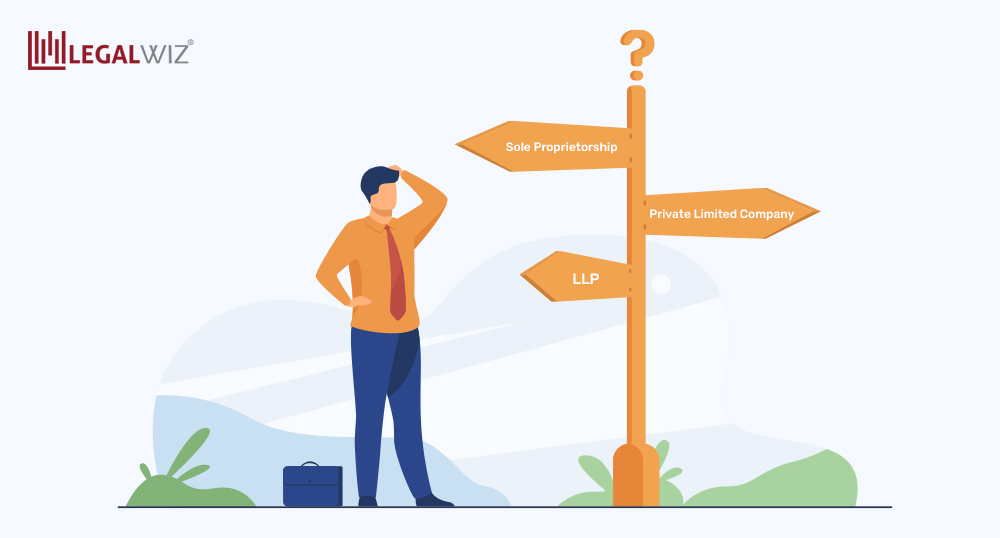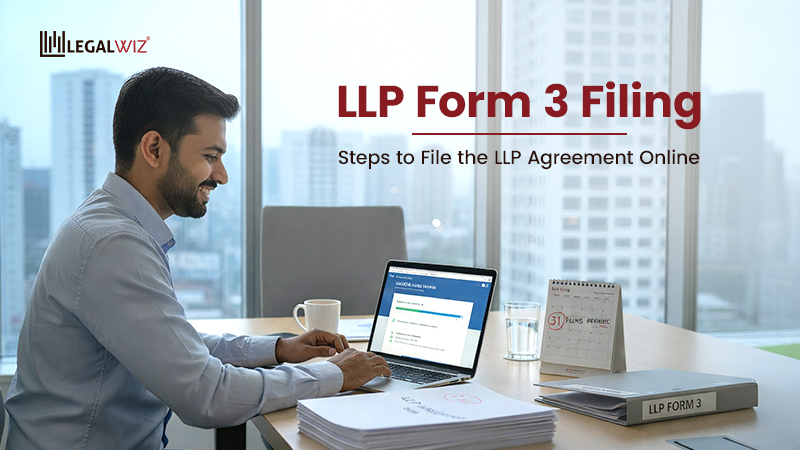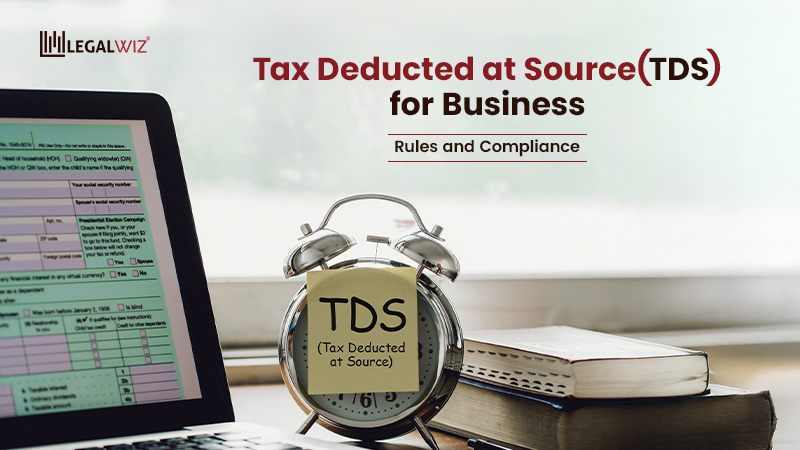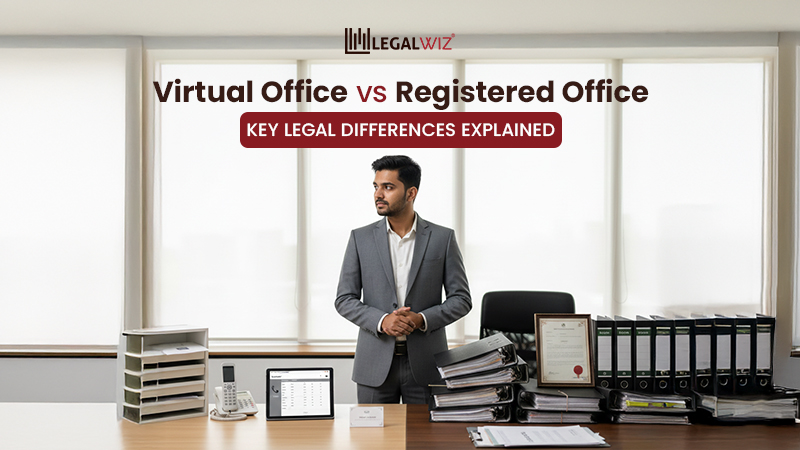How to Select Business Structure for Starting a New Business?
When it comes to starting a new business in India, finding the right business structure becomes critical. There are multiple options available to entrepreneurs. Hence, it would become a daunting task to choose the right one among them. With the greater lucidity and sharp vision, the choice would become much easier. One just needs to be aware of how many levels of authority one wants, the level of compliance one can goes along with, and the amount of investment you need. Choosing the right business structure is key to the success of any business. One should make a wise and better choice in the first place, with room to change it later if one wishes to.
The option of what kind of business structure the company has will influence the amount you are paying for your assets (your home, your savings) or even the ability to raise money from angel investors or venture capitalists in terms of taxes or the extent of risk or liability.
Also Read: Understanding differences between business structures w.r.t raising fund
The business structure you choose is, therefore, very critical. This guide will clarify the different business frameworks’ principles, but we cannot tell you exactly what framework you should use. Consult business service professionals like LegalWiz.in when it comes to managing compliance matters.
Choosing the right one from the alternatives becomes difficult for entrepreneurs without prior knowledge concerning advantages, disadvantages, differences, and limitations. They can get help through legal and professional deliberations.
Company: The companies act consists of the body corporate for all the businesses and organizations as a company. Mainly, there are three kinds of the company one can register under as given below,
– Private Limited Company (PVT)
– One Person Company (OPC)
– Public Company
Sole proprietorship: – Starting a business as a single ownership is one of the primary forms of all companies. By its title, it is a single owner company. However, a sole proprietorship is not a legal body but can work as an informal structure. Its downside is as follows:
You will have more trouble collecting money: you will not raise your company’s valuation as you will not sell any shares in your company.
You can find it challenging to get a small business loan: banks are often unwilling to give corporate credit to ownership since it is seen as less trustworthy.
You take full responsibility, and your personal assets (like your vehicle, home, and personal savings) are at risk if your company fails, and you become overcrowded with debt.
You will bear personal responsibility for any future legal problems under this business structure. It means you could go after your personal belongings if someone sues you.
Partnership: When multiple individuals or groups of people want to perform a profit-based business, they must proclaim themselves establishing a company. It provides two forms of business registration.
In general, partnership gain or loss is passed on to the partners without any partnership fee. The contracts will describe various risk levels, so you can read about those partnerships, each with different risk levels, that have general partnerships and limited partners. Your relationship agreement should specify what happens if a partner withdraws, purchases, and sells partners’ agreements and settlement arrangements if appropriate.
If you believe a partnership could work for your company, make sure you do it correctly. Find a lawyer with related expertise and ask them to give you references from current and past customers. This is a complex environment, and a flaw in the relationship agreement can create several difficulties.
In some instances, a limited liability partnership (or LLP) is the best in case when you have more business owners not wanting to have an ideal business structure with limited liability. It enables a partnership or sole proprietorship to be versatile; however, as its name implies, it restricts liability, like that of a company. An LLP is typically a business structure and blends some legal liability restriction with preferential tax treatment for benefit and asset transfers.
This is a new type of legal entity and be mindful that LLPs vary significantly from one state to the next, so that one’s advisability and benefits vary. It is a good idea to talk to a local compliance business if you want to LLP registration in India.
- Under LLP-RUN, only two names can be used against the previous type, where six names can be applied in a single request when starting a new business. While there is a possibility of re-submission, the applicants must submit their names after the availability search. If the names in re-submissions are denied, the new application must be submitted.
- The name reservation application option is available from partners. Just one name can be added with FiLLiP. Only if the name can prove distinctness and uniqueness should this choice be selected. If re-submission is made, the incorporation documents will be prepared in another form again.
- The name assigned under LLP-RUN is reserved for 90 days. If the application for LLP registration, i.e., At that time, FiLLiP is not filed, the name may be reserved through the new application.
- Only 2 DPINs can be allocated via FiLLiP. If more than two named partners exist, then the respective partners can receive DPIN / DIN after incorporation by filing DIR-3. The LLP must then add the designated partner or, if appropriate, change the partner’s designation.
- The LLP Agreement is still being processed by the RoC concerned instead of by the CRC that can be processed more slowly than in two previous phases.
One thing to heed here is, LLP functions as a body corporate and not the general partnership, defining its enactment as a business entity. The following is necessary to consider before starting a new business in India.
Envisaging a better outcome for your business
Every business should provide itself with a growth strategy to pursue, depending on how it wants to grow the business when starting up. Next, conjoin your business’s size and convolutions with your growth strategy to get an idea about a suitable business structure. For instance, if one wants to function solitary under sole ownership, they can do so. Later, they even can bring someone else in a partnership by themselves rather than listing as a single ownership company. One must choose wisely because a lot depends on the company’s structure.
Measuring financial necessity
Most of the entrepreneurs look for an excessive range of financial alternatives and availabilities. To expand the business, one needs to examine borrowing agencies and banking institutions to furnish financing to control businesses when starting a new business. Sometimes owners would like to add up more associates with an infusion of capital to maintain the fund flows from inner sources in a typical way under a specific business structure. With a vision and intuition of higher growth rate and need for more capital, it is viable to go for a Private Limited Company that attracts money from VCs and Angel investors.
Pondering over-taxation system
The issue of taxation comes into focus when you start generating revenue. Income generation and its structure by corporation ascertain the amount of taxability of the corporation. More amount of payable tax would leave you with a lesser amount of revenue in hand. For instance, a company exceeds the exemption; the sole proprietorship company will have a max load of 5 to 30 percent. It becomes evident to identify LLP and partnership is viewed sensibly by taxing institutions depending on the business structure. The inception of Dividend Distribution Tax (DDT) enables company promoters to utilize the LLP instead of registering businesses.
Also Read: Difference between Private Limited Company and LLP
Take consideration of the upkeeping cost
The first step in this direction when starting a new business should be comparing the maintenance cost of similar business structures. For instance, the nominal value of registration for creating sole ownership is simple and easy. An LLP registration needs upkeeping is bound to remain acquiescent, not leading to any higher registration costs. Maintaining acquiesce tendency is prominent for its smooth working, mainly for LLP and private companies with higher demands.
Consider the other variables like calculating the cost-benefit scenario of every business structure, credibility, long-term survival with a steady flow of income generation, privacy concerns related to documentation.
In conclusion
Ensure that you consider the points mentioned above while choosing the right business structure for your business. It often happens that choosing the right business structure in India for your business would make you feel baffled and exasperated. Jumping from one corporate structure to another is easy if you have a legal partner who would empower you to make a sensible choice as from one-person business to registering as a partnership firm and later moving partner into an LLP.

Karan Dave
Karan Dave is a seasoned writer associated as a content expert with Legalwiz.in. He has blended his interests in business solutions and starup economy with the writing capabilities to provide resourceful information for varied audiences.







